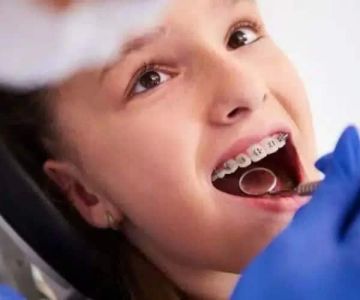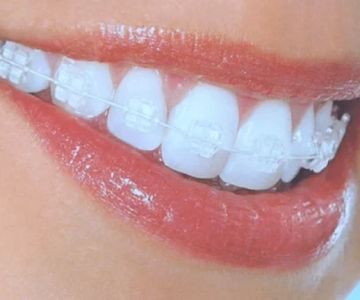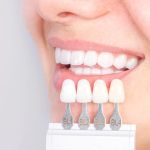Jaw Surgery for Bite Correction: A Detailed Overview
Jaw surgery, or orthognathic surgery, is often a critical step for individuals dealing with significant bite issues. Bite problems, medically referred to as malocclusion, affect not only the appearance of the smile but also have significant implications for oral health. In the United States, an increasing number of patients are seeking jaw surgery for bite correction to enhance both functionality and aesthetics. Understanding the specifics of this procedure can guide potential candidates in making informed decisions about their oral health.
Understanding Malocclusion and Its Impact
Malocclusion refers to the misalignment of teeth or incorrect relation between the teeth of the two dental arches. This condition can result in various oral health problems, including difficulty in chewing, speech issues, and increased risk of tooth decay. According to the American Association of Orthodontists, nearly 30% of the population suffers from malocclusion that requires treatment. These issues often necessitate intervention beyond traditional orthodontics, highlighting the importance of jaw surgery as a corrective measure.
The Necessity of Jaw Surgery
Jaw surgery becomes necessary when orthodontic treatments such as braces or aligners cannot fully address the bite issues. For patients with severe discrepancies in jaw size or alignment, surgery provides a permanent solution. Procedures are typically recommended for patients whose jaws have stopped growing, with most candidates being adults. Studies show a success rate exceeding 90% in bite correction surgeries, underscoring its effectiveness.
The Procedure: What to Expect
Jaw surgery is usually performed under general anesthesia in a hospital setting. The procedure involves strategic cuts in the jaw bones, allowing the surgeon to reposition them into the correct alignment. Titanium screws and plates are often used to secure the jaws in their new position. A personalized plan is developed for each patient, considering their unique anatomy and the specific nature of their bite issues.
Recovery and Post-Surgery Care
Recovery from jaw surgery can be extensive, typically requiring a hospital stay of one to two nights followed by several weeks of at-home recovery. During the initial recovery phase, a liquid diet is recommended to minimize jaw movement. Pain management and adherence to post-operative instructions are crucial for optimal healing. Regular follow-up visits with the surgeon and orthodontist ensure proper recovery and integration of the new bite alignment.
Benefits of Bite Correction Surgery
Corrective jaw surgery offers numerous benefits, including improved bite function, enhanced facial symmetry, and relief from temporomandibular joint (TMJ) disorders. Patients often experience increased confidence due to the enhanced aesthetic appearance post-surgery. Long-term oral health is also improved, reducing the risk of tooth decay, gum disease, and abnormal wear patterns.
Considerations and Risks
As with any surgical procedure, jaw surgery for bite correction involves certain risks, including the potential for infection, nerve damage, or issues with bone healing. A thorough pre-surgical assessment is crucial to minimize these risks. Patients should discuss all possible risks with their surgeon and weigh them against the benefits of improved bite function and appearance.
Conclusion: Taking the Next Steps Toward Healthier Smiles
Jaw surgery for bite correction is a significant undertaking, but its benefits can dramatically improve both the functional and aesthetic aspects of oral health. Potential candidates should consult with their dental professionals to discuss the suitability of this procedure for their specific needs. Embrace the possibility of improved oral health and quality of life by considering this transformative procedure. For those interested in learning more, the Dentistry Toothtruth website offers comprehensive resources and expert guidance.




 WinningSmiles Custom Dentistry & Implant Center
WinningSmiles Custom Dentistry & Implant Center Crossroads Pediatric Dentistry
Crossroads Pediatric Dentistry Corona Hills Modern Dentistry and Orthodontics
Corona Hills Modern Dentistry and Orthodontics Ernstberger Orthodontics
Ernstberger Orthodontics Emergency Dental Help
Emergency Dental Help Shawn O'Berry DDS
Shawn O'Berry DDS The Importance of Oral Health Education During Pregnancy for a Healthy Pregnancy
The Importance of Oral Health Education During Pregnancy for a Healthy Pregnancy Why Skipping Dental Checkups Can Lead to Bigger Oral Health Problems
Why Skipping Dental Checkups Can Lead to Bigger Oral Health Problems Advantages of Porcelain Dental Restorations
Advantages of Porcelain Dental Restorations Best Tips for Brushing Your Teeth Properly for Healthy Gums: Essential Techniques for Oral Health
Best Tips for Brushing Your Teeth Properly for Healthy Gums: Essential Techniques for Oral Health How Can Diabetes Cause Tooth and Gum Problems? Preventing and Managing Oral Health Issues
How Can Diabetes Cause Tooth and Gum Problems? Preventing and Managing Oral Health Issues Healthy Habits for Promoting Good Oral Health and Hygiene: Tips for a Healthy Smile
Healthy Habits for Promoting Good Oral Health and Hygiene: Tips for a Healthy Smile